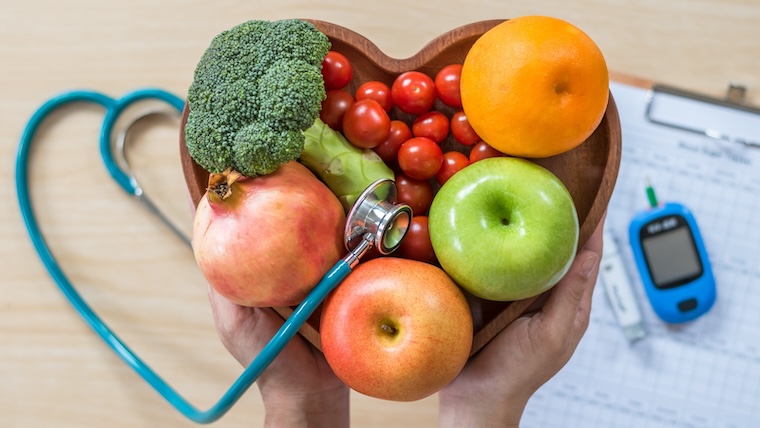There is a rising popularity of continuous glucose monitors (CGMs) on social media, regarding the importance of limiting blood glucose spikes after meals. This has led many to believe that even short-term increases in blood sugar levels are unhealthy.
Dr. Layne Norton (Ph.D. in Nutritional Sciences) published a video on his YouTube channel exploring the impact of meal sequencing on postprandial glucose excursions (PPGE). He examined whether the order of food consumption affects blood sugar regulation and insulin sensitivity. Check it out below:
A study comparing eating vegetables and protein before starchy carbohydrates versus eating starchy carbohydrates before veggies and protein found that blood glucose levels were lower in the former. (1)
Additionally, a 16-week randomized controlled trial by the same researcher involving pre-diabetic subjects observed a minor reduction in HbA1c (a marker of long-term blood sugar control) when vegetables and protein were consumed first. However, this decrease was not clinically significant. (2)
Per Norton, the perceived dangers of short-term blood sugar spikes if you don’t eat foods in a specific order lack scientific backing. Overly focusing on food sequencing and blood sugar fluctuations may inadvertently promote unhealthy dietary choices.
Norton adds that the postmeal outcomes of certain foods shouldn’t be examined in isolation, as they may not accurately represent long-term health consequences.

“If we look only at postmeal outcomes, then we can’t eat any dietary fats because it impedes flow median dilation (widening of an artery when blood flow increases in that artery), which is a factor for cardiovascular disease,” said Norton. (3)
On the other hand, protein consumption has been linked to increased levels of mTOR and IGF-1, factors that some research suggests may contribute to cancer development. (4)
Conclusion
The studies’ findings suggest that the order in which you eat your food does not significantly impact blood sugar levels and insulin sensitivity. However, there may be some benefits to eating protein and fibrous vegetables first, as they can be more satiating than eating starchy carbs first.
Norton recommends prioritizing a balanced diet, regular exercise, adequate recovery, and maintaining a calorie deficit (expending more calories than consumed) to lose weight and control blood sugar levels.
References
- Shukla, A. P., Dickison, M., Coughlin, N., Karan, A., Mauer, E., Truong, W., Casper, A., Emiliano, A. B., Kumar, R. B., Saunders, K. H., Igel, L. I., & Aronne, L. J. (2019). The impact of food order on postprandial glycaemic excursions in prediabetes. Diabetes, obesity & metabolism, 21(2), 377–381. https://doi.org/10.1111/dom.13503
- Shukla, A. P., Karan, A., Hootman, K. C., Graves, M., Steller, I., Abel, B., Giannita, A., Tils, J., Hayashi, L., O’Connor, M., Casper, A. J., D’Angelo, D., & Aronne, L. J. (2023). A Randomized Controlled Pilot Study of the Food Order Behavioral Intervention in Prediabetes. Nutrients, 15(20), 4452. https://doi.org/10.3390/nu15204452
- Keogh, J. B., Grieger, J. A., Noakes, M., & Clifton, P. M. (2005). Flow-mediated dilatation is impaired by a high-saturated fat diet but not by a high-carbohydrate diet. Arteriosclerosis, thrombosis, and vascular biology, 25(6), 1274–1279. https://doi.org/10.1161/01.ATV.0000163185.28245.a1
- Wan X, Wang S, Xu J, et al. Dietary protein-induced hepatic IGF-1 secretion mediated by PPARγ activation. PLoS One. 2017;12(3):e0173174. Published 2017 Mar 3. doi:10.1371/journal.pone.0173174
Featured image via Shutterstock/Chinnapong